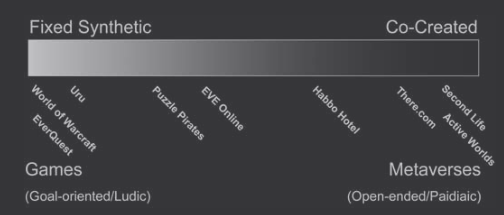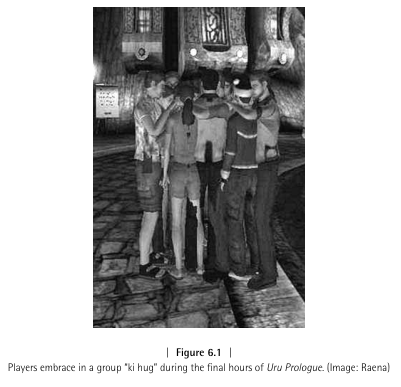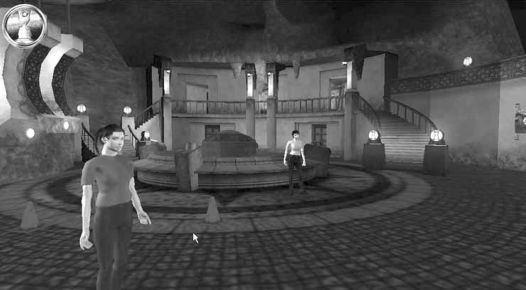created 2025-03-23, & modified, =this.modified
tags:y2025designarchitecturevirtual-spacesethnography
rel: Homo Ludens - A Study of Play-Element in Culture
Why I’m reading
Returning to studying virtual spaces and virtual architectures. Digital worlds etc.
This one focuses on the communities in digital spaces. It seems to contain a case study on a group of people who make an exodus from one failed virtual space, to another.
In the virtual space, people are bound to rules of play and the engine/mechanics. When transferring a culture between these engines, and with an already established player-base what happens?
Methods of Culture by Tom Boellstorff
- CoP is the first book length exploration of a virtual culture formed at the interstices of multiple virtual worlds. It observes the Uru Diaspora - the movement of an online community into another community after the destruction of their own.
- It is fundamentally concerned with questions of methodology.
- Pearce’s experience as a designer and interest in emergence, means that it is valuable for those concerned with game design and virtual-world governance. Pearce shows us how in a sense all culture is emergent, since it is never intelligible solely in terms of individual actions and beliefs. She thus reaches back to classic functionalist and structuralist conceptualizations of culture in terms of an integrated whole.
Communities of Play
Adult play tends to be marginalized in the US and Europe with anthropologist Richard Schechner noting, “In the West, play is a rotten category tainted by unreality, inauthenticity, duplicity, make- believe, looseness, fooling around, and inconsequentiality”
Johan Huizinga, defines play as:
a free activity standing quite consciously outside “ordinary” life as being “not serious,” but at the same time absorbing the player intensely and utterly. It is an activity connected with no material interest, and no profit can be gained by it. It proceeds within its own proper boundaries of time and space according to fixed rules in an orderly manner. It promotes the formation of social groupings which tend to surround themselves with secrecy and to stress their difference from the common world by disguise or other means.
Marshall McLuhan termed “global village” to describe the shared story-telling space of television. He noted that large, dispersed groups could convene over this new “electronic hearth” to engage in an intimate, simultaneous experience that was once restricted to geographic co-presence.
Multiplayer Games from 3500 BCE to 21st Century
Egyptian Senet, Mesopotamian Ur, African Mancala, Go and Mah Jongg.
Earliest computer games continued a multiplayer trajectory. Tennis for Two and Spacewar were both multiplayer games.
Thought
It’s probably easier at the time to offload some AI programming and use another human in the game-loop as an opponent.
Give two humans input and they can probably make a game out of purely movement in a space.
Gameplay tasks can also be decomposed, player to player. For example, one person controls the ship and the other fires. There is no need for multiplayer, but game labor can be divided.
A revealing title: H.G. Wells wrote a classic volume of wargaming titled, “Little Wars: A Game for Boys from Twelve Years of Age to One Hundred and Fifty and for That More Intelligent Sort of Girl Who Likes Boys’ Games and Books (1913).”
MUDs to MMOs and social worlds.
Second Life and There.com opened in 2003, with one taking off and the other not.
Uru Diaspora
Among the most- lamented MMOG “failures” is Uru: Ages Beyond Myst, the subject of this study. Based on and set in the world of the popular single player Myst series, Uru departed from many of the traditional conventions of the fantasy-based, D&D-derived MMOGs described earlier by transporting its complex puzzles and unique style of spatial storytelling into a cooperative, multiplayer game.
As we will learn, Uru players migrated into other virtual worlds, created their own Uru-based cultural artifacts, and in some cases created entire facsimiles of areas in Uru. They created Uru mods in other game engines, including original levels for the game, and they even instigated a network of player-run Uru servers to allow players to run the game after its initial closure. This emergent culture, which traversed both games and virtual worlds, provides us with rich insight into the many facets of the interplay between networked play communities and the virtual worlds they inhabit.
Virtual Worlds, Player Ecosystems and the Ludisphere
Murray’s “active creation of belief”: Virtual communities in virtual worlds, but the communities can be considered as real as in “proximal space.”
Thought
Whenever I see these “characteristics” my thought is always to construct something in opposition, i.e. A Zebra has stripes, so construct a Zebra that doesn’t have stripes.
Here I’m seeing Spatial, Contiguous, Explorable, Persistent etc and with everyone I imagine the virtual world that violates that property.
What is the non-spatial virtual world? What is the world that you cannot explore? What is the virtual world where persistent identities do not exist?
Characteristics of Virtual Worlds
- Spatial - They must be spatial in nature. Graphically they do not need to be 3D, real-time etc. They can be textual.
- Contiguous - geographically contiguous, possessing a sense of spatial continuity. Virtual Worlds are mappable.
- Explorable - players may go where they want. Interestingly, the vast majority of virtual worlds are built with pedestrian mobility as their baselines, augmenting this with vehicular or air travel, which in games often function as a reward for completed goals.
- Persistent - the world remains on at all times, and actions allow players to maintain characters from one visit to the next.
- Embodied Persistent Identities - All virtual worlds have avatars, or player representations. In virtual worlds players have more control over their bodies.
- Inhabitable - the world is inhabitable and participatory. One may live in a world, inhabit it and contribute to the culture (games produce cultures in the game itself). This primary characteristic makes it different from other immersive fictional worlds, like literature, film and other media.
- Consequential Participation - Your presence is actually a part of the world and of other players’ experience of it. In a novel, your absence is not detectable by any of the characters; in a virtual world it is.
- Populous - a social world with people to interact with.
- Worldness - an elusive quality, summarizing coherence, consistency and completeness within the world’s environments, aesthetics and rules.
The Rise of the Avatar
“Avatar” was originally a Sanskrit term meaning the god’s embodiment on earth. It was originally coined for this use, by Chip Morningstar to describe player representation in the 2D graphical online community Habitat.
Uru avatar creation has affordances for wrinkles, gray hair, and even malepattern baldness, popular features with both male and female Uru players, the majority of whom are baby boomers. Second Life provides a number of different adjustments for breast size and orientation, providing more options for women, but also increasing the possibility for hypergendered representations. There is a popular folk theory in Second Life that female avatars with oversized bosoms are likely to be inhabited by male players.
Most players in this study felt that their avatars were expressions of their “true” selves as much if not more than were their “real-life avatars.” Players who had met each other in real life were able to hold multiple conceptions of each other’s identities in their minds, encapsulating the personas as expressed in both the “reallife avie” as well as the avatar in virtual space.
Play described by Caillois
- free (not obligatory)
- separate (circumscribed within the limits of time and space)
- uncertain (outcomes not determined in advance)
- unproductive
- regulated (governed by rules); and
- fictive, make-believe (a second unreality) The idea that play, is to many definitions, inherently unproductive, is a problem. Author states, “play can become an engine for a high level of creativity and innovation, which can take a variety of forms, through both leveraging and subverting software affordances.”
Ludic vs Paidiaic Worlds
Paidiaic, meaning lacking the structured rules of formal games, are often characterized as sandboxes, in which players engage in open-ended, unstructured, creative play.
MMOG players will engage in paidiaic play outside of the prescribed rules of the games. We also see a game- within- a- game form of emergent play where players invent different games than prescribed by the software.
The Uru Diaspora spanned several virtual worlds, including MMOGs and MMOWs.
Game Design is “Second Order”
As a game designer, you can never directly design play. You can only design the rules that give rise to it.quote
Emergence happens regardless of where on the spectrum the game lies.
Emergence in Cultures, Games and Virtual Worlds
This emergent phenomenon inspired economist Edward Castronova’s now famous economic analysis of EverQuest, in which he determined its imaginary universe, Norrath, to have the real world’s seventy seventh largest economy
Gold farming, and other practices are employed by low-wage laborers who work in barracks-style housing playing WoW and gathering virtual currency, that is then traded on the black market. These Chinese gold farmers created emergent behavior in game, where they are often shunned with racism.
“Class” divides:
Warriors of all races, dissatisfied with what they felt were unfair statistics associated with their class, gathered at urban centers and even blocked a bridge to demand a change to the very software they inhabited
Emergence
Emergence comes out of the study of complex systems. Complex, often decentralized systems, self-organize in ways that cannot be predicted by the underlying structures or rule sets, nor by the individual behavior of agents within the system.
Emergent properties cannot be studied by physically taking a system apart and looking at the parts (reductionism). They can be studied by looking at each of the parts in the context of the system as a whole.
Reading, Writing and Playing Cultures
At the time of writing, “game culture” was viewed as a low form. Some judges ruled that they do not warrant the same speech protection rights as other media, as they do not qualify as a form of Expression.
Consumption in industrial societies acts as a form of production, perhaps even an art form.
Artistic instinct underlies play practice.
Ethnography approaches
- follow the people, specifically migration of players to different game worlds
- follow the thing, the IP of Uru and emergent fan cultures
- follow the story, narrative of the refugee status of the Diaspora
- follow up and follow leads, taking on tangents where much of the activity is unstructured and unscheduled Virtual worlds, are they liminal? a space between and site of transformation.
when people enter into a play frame, they are literally and figuratively playing by a different set of social rules that allow them to take liberties with their roles and identities that they might not take in ordinary life.
rel:Performance Art From Futurism to Present RoseLee Goldberg
This study “sets out to create a nonfictional account of a fictional world, and explores the emergent culture of ‘fictive ethnicity’ and identity adopted around an imaginary homeland”
The Uru Diaspora
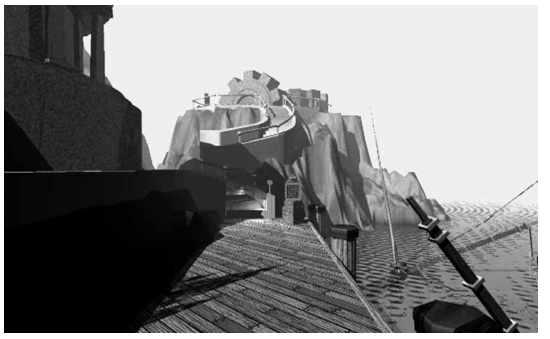 Most Uru players had been Myst fans, and were a diverse group aging mid-teens to mid-seventies, with the majority in their 40s and 50s.
Most Uru players had been Myst fans, and were a diverse group aging mid-teens to mid-seventies, with the majority in their 40s and 50s.
The gender mix is exactly equal, an anomaly where MMOG are concerned.
Many did not like or play other games. Because the game is intellectual in nature, players tended to value intelligence and problem-solving; most players expressed an aversion to games with killing and violence.
Myst designers, were minister sons and embedded implicit Christian spiritual themes in the game and narrative, subtly. This is akin to C.S. Lewis’ allegorical features.
The overarching myth involves the D’ni people, a human-like race who had the power to call into being entire worlds through writing. Some game scholars see this as a metaphor for programming.
In the game there were no explicit instructions given as to the game mechanics or rules.
Text goes over some regions in the book, like
- The nexus - a small chamber that contains a mechanized library of linking books.
- The relto - the player’s individual home base, a small adobe cottage on an island in the clouds.
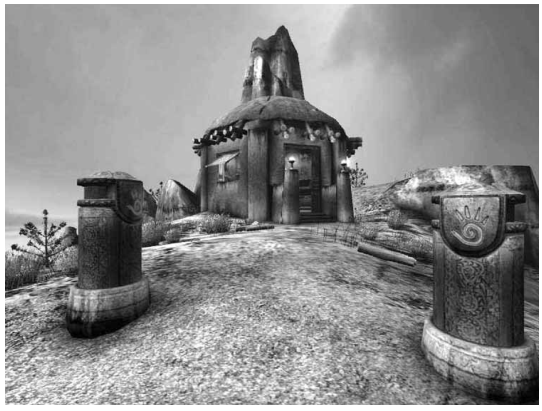
- The city - a shared space, abandoned by its creators and in various states of disrepair, now only operated by explorers. It had a large library where new linking books would appear.
All players carried two personal devices on their avatar - a Relto book, a small linking notebook enabling players to transport back to their Reltos, and a Ki, a small PDA device to capture and store in-game screenshots which could be shared to other player Kis or posted on “hood imagers.”
Identity as Place
40K people received invites to Uru Prologue, and 10K actually signed up. The service was closed, as Ubisoft was surprised and disappointed with low turnout and the gated entry (invites were given in batches, and the client faced technical problems.)
The closure date became a holiday for members of the Diaspora.
The last day of Uru, many players assembled in-world, gathering in hoods, or visiting each other’s Ages.
Players organically met on internet spaces to grieve and make art.
Yearning for the Homeland
My Homeland Uru
From my beautiful homeland
From my beloved homeland
I hear the Bahro cry
and Kadish’s wife sing her song of despair
And a refrain is sung by a sister who lives far from her homeland
And the memories make her cry
The song that she sings springs from her pain and her own tears
And we can hear her cry
Your homeland strikes your soul when you are gone
Your homeland sighs when you are not there
The memories live and flow through my blood
I carry her inside me, yes its true
The refrains continue, as does the melancholy
And the song that keeps repeating,
Flows in my blood, ever stronger
On its way to my heart
I sing of my homeland, beautiful and loved
I suffer the pain that is in her soul
Although I am far away, I can feel her
And one day I’ll return
I know it
Thought
This might be the wrong thing to say, but to what extent are they, or some members “roleplaying” loss. Or maybe the question is “is anyone performing loss?” I say this just as something to explore, because I know there are genuine feelings here, as if certain sites or online communities I am a part of were destroyed I’d feel a sense of loss.
But would I create a poem about the loss of a service? Someone might.
Even before shutdown they began to explore alternatives
- recreate Uru in other virtual worlds using the tools provided.
- ready-to-play-solutions that they could move to instantly, not losing momentum. As an interim a text-based MUD was formed, but players seemed to long for the visual experience.
Self appointed “scouts” began to investigate Ryzom and Everquest. But the two primary candidates (due to lack of violence and competitiveness) were Second Life and There.com.
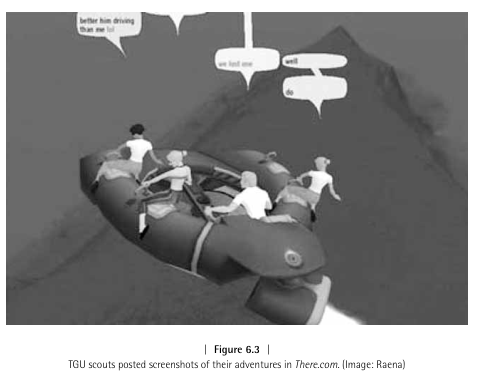
About 200 Uru players settled in Second Life, creating D’ni Island, the social heart of Uru.
Uru community managers alerted these platforms of the influx of players.
There.com offered scenic vistas where Second Life’s loading schema did not load objects in the distance.
They decided to fracture but with the forums becoming the primary communication hub.
The main site ended up being There.com. Various Thereians who hung around the group and enjoyed their culture joined in. 450 members were included at the midpoint, waning to 160 at the end of the study but maintaining key figures.
There was griefing.
Griefers would then place another sign in front of theirs, such as a billboard advertising cybersex. The primary form of griefing entailed players running over avatars with dune buggies.
After being wronged by the operator a virtual world, they felt the best solution would be one not controlled by a corporation.
Home of their own
“To me, Uru wasn’t only about the people—it was the people AND the place … the mood, atmosphere, ambience.”
Players created the aesthetics, learning how to use digital creation tools to recreate from scratch (textures by hand) and replicas of friend’s avatars.
Attraction to water:
In an interview, Erik cited his favorite aspect of Uru: “the water … that was the genius of the hood—as well as other places (in Uru). Placing a fountain in the hood meant that people would gather there … because people are drawn to water— esp running water.” Architects and urban planners are aware that water, whether as a natural feature or a man- made element, is a major attractor in public space. As Erik put it, “look at any piazza in any italian city. or the water cooler at the offi ce for that matter. water is life, therefore people seek water.” Erik began his re- creation of the hood with the fountain, “the centerpiece of anything Uru.” Indeed the importance of the fountain can clearly be seen, as it is a recurring artifact that appears in many different player- created instantiations of Uru
Assimilation and transculturation Over time Uru players made major contributions to the there.com community and became fully integrated while still maintaining their group identity.
Uru Reclaimed
Meanwhile fans and hackers were working to reverse-engineer the server software. This mindset was built into the game:
There had always been a segment of the community that “hacked” and reverse engineered the Uru software… . The Myst world is very dedicated to puzzle solving, and self- reliance, and that the experience of the participant could be immersive in many ways. And when Uru was hacked, it was found that there was additional material that made it clear that some expectation of such hack- ing was built into the game … which had no internal game function, but were enjoyed immensely by those who discovered this hidden material.
There.com, only a few months after Uru refugee arrival, threatened to close but players petitioned and by getting the sub count higher were able to ward off this threat.
Inner Lives of Avatars
Designers determine what modes of representation/expression and thus make assumptions about bodies and sociality.
In Uru avatars were aesthetic, without stat association. There.com avatars were more disney-esque and shapely, with Second Life had more realistic and allowed for more customization, however some felt the animations were stiff and unnatural.
Uru was the first game I ever played where I was an actual avatar … I discovered after spending all those hours … I kind of felt that I was living vicariously through the avie who was exploring the game … it was nice to see yourself, or think of yourself as a person within the game.”
It is suggested, that an avatar is not entirely me nor entirely not me but a version of me that exists only in a mediated context. When that context ceases to be that part of the self dies as well. That part of the self, expressed and projected through the avatar in a shared world, is as much a creation of the group as the group is the creation of the individuals within it.
Social Construction of Identity
Leesa became the reluctant leader of over 450 people, through a process of social feedback, as more players came she developed a sense of leadership and responsibility for them, at one point spending equal time in all Uru shards. When she moved, players followed her.
The better feedback artisans got, the more they desired to create.
The word Uru has a double meaning in the D’ni language, it means “you are you.” But it also means “a community or large gathering.” This points to both individual and group identities integrally related to one another.
Communities and Cultures of Play
Western view of play is unproductive but this study shows that to the contrary, time spent on play doesn’t mean waste but can be productive in terms of creative enterprise and effort placed on community building.
Community of Loners The vast majority of TGU players interviewed for this study described themselves as “loners” or “shy”.
The shift from play to coming to the game to socialize.
The closure of Uru worked as a catalyst to accelerate and cement social bonds that were already forming. One key indicator of social bonding forming is disclosure of personal information. When asked how players spent their last few days, the majority of time was spent talking, and telling stories.
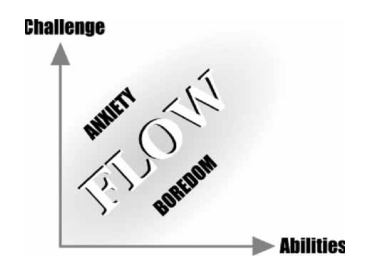
Csíkszentmihályi flow diagram - when challenge is too high anxiety ensues.
Thought
I see this chart as correct for an instance of flow, or a particular type of challenge, but might not generalize.
Artifacts as Carriers of Meaning
Certain artifacts persist as uniquely meaningful to Uruvians and can be found recurring across various player- made instantiations of Uru culture.
Another key artifact is the Relto. Both There .com and Second Life artisans attempted to create authentic “traditional” Reltos modeled after the Relto in Uru. In Second Life, the fl exibility of the in-game building system allowed for the modeling of a relatively accurate simulation. In There .com, with its more constrained and stylized building tools, the traditional Uru Relto could only be approximated, although the rendition is still easily recognizable as a Relto. Before too long players in both games began to modify the Relto design to create more “modern” interpretations.
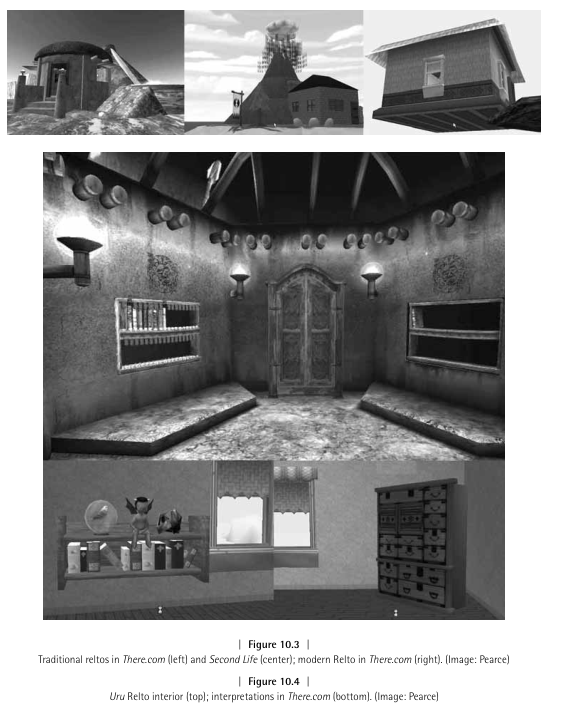
Creating New Ages/Worlds
The creation of new Ages is a somewhat controversial theological issue among TGUers. According to group historian Nature_Girl, humans are not really supposed to create Ages at all, as this skill is a unique gift of the D’ni. Historically in Myst and Uru lore, attempts to create Ages by people not of 100 percent D’ni blood often led to disaster.
Ludic Leakage, Porous Magic Circles
Audio features in there.com, such as barking of dog or other activities. rel: Bug on Sensor
Players also frequently post URLs in-world that launch out- of-game web sites, further blurring the boundary between “game” and “nongame” spheres.
In Real Life Gatherings, some players arrive dressed in their typical character’s garb.
Emergence as Design Material
Social emergence in this context is the outcome of prolonged and repeated interaction with a persistent networked virtual world through a persistent identity.
- Emergence happens regardless of the world being fixed synthetic or co-created.
- Emergent behaviors of communities of play arise out of a combination of the proclivities of people who are attracted to a particular virtual world, and the intersection of their values, interests, and skills with the world’s design feature.
